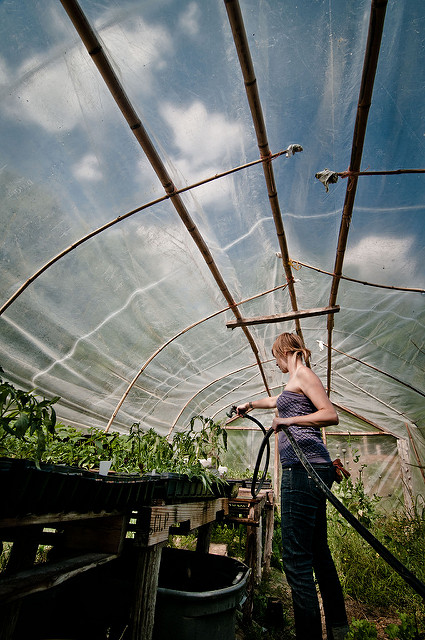Garlic and ginger
Taking care of our 100 foot row of garlic has been of the utmost importance for Kristin and I. Garlic – good garlic – is a needed treasure in our lives. Grocery store garlic is for the birds so to speak, usually soft in spots and weak. We had a dearth of home-grown last year, so we decided to buy some seed stock from Frederick at Somerset Farm, one of ECO‘s grower/owners.
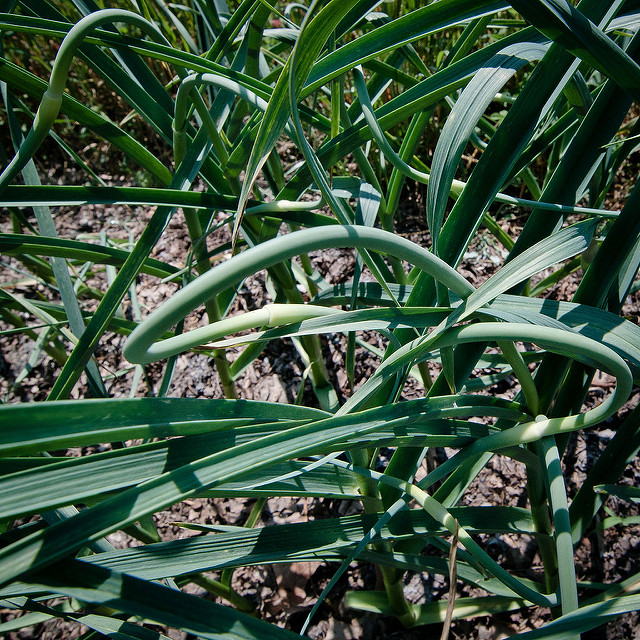
We planted the garlic in November of last year, some six or so pounds of it, enough to get almost to the end of the row. After a couple of mulchings, the garlic is beautiful. And scaping. In order to promote the growth of the underground bulb, the scapes are removed. Scapes can be used in cooking for their light garlic flavor or fermented. We picked all the scapes and handed them over to Adah for fermenting, but not before Kristin grabbed a handful to throw in with some beet greens she was cooking.
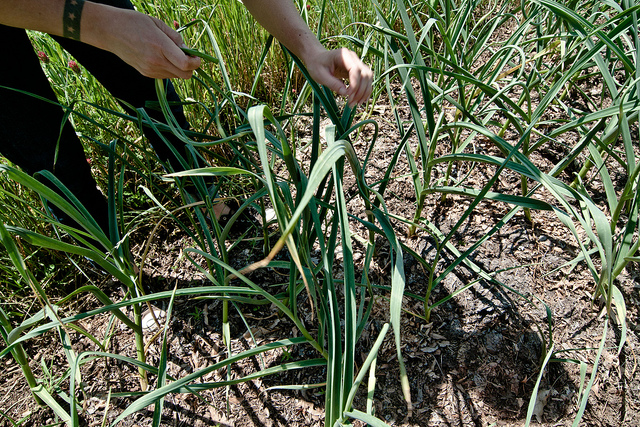
Basically all you have to do is pull on the scape to remove it from the plant. Most just break off where they emerge from the stalk. Others come all the way out leaving you with a nice piece of tender goodness.
The harvest went quickly, the two of us filling a five gallon bucket in about ten minutes.
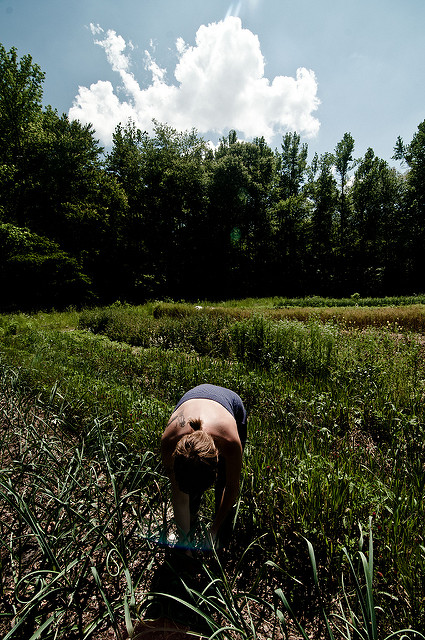

After the scape harvest, it was on to planting ginger. In early March I went to a ginger workshop put on by East Branch Ginger and Debbie Roos of the Chatham County Cooperative Extension. At the end of the workshop everyone received a few pounds of seed ginger. After pre-sprouting the ginger behind our woodstove and in the greenhouse, it was finally ready to plant. The pre-sprouting gives the ginger a head start.
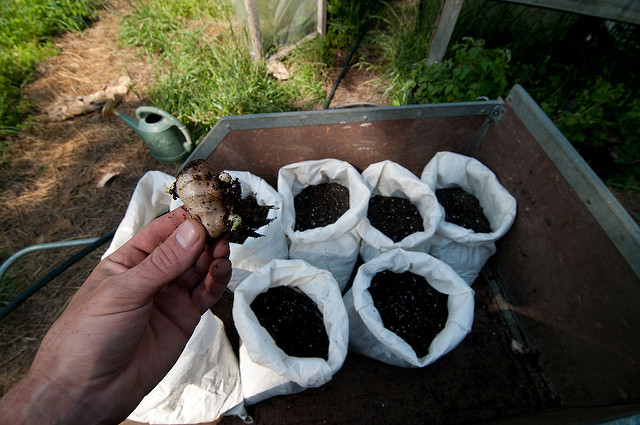
In order to control fertility (ginger is a heavy feeder) and water, we are growing the ginger in our old chicken feed bags from Reedy Fork Farm. The bags provide great drainage as well as easy hilling. Ginger is hilled three times – once when the base of the shoots turns from bright white to bright pink, a second time four to six weeks later and a third time four to six weeks after that.
Our soil mix consists of Sunshine potting mix, feathermeal, leaf mold, worm castings and mycorhizzal granules. We get the potting mix and feathermeal from Chatham Farm and Home Supply. They have bulk feathermeal from North Carolina sources, making it cheaper and more local for us. The fungus comes from Mushroom Mountain in South Carolina and the worm castings come from Carolina Worm Castings who make their compost in the building next door to ECO.
We hope to harvest eight to sixteen pounds of ginger this fall. This is a big experiment, but I can easily see myself getting sucked into this big time.
